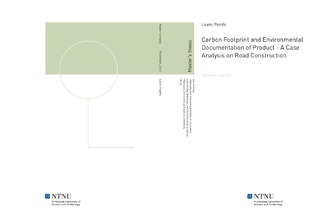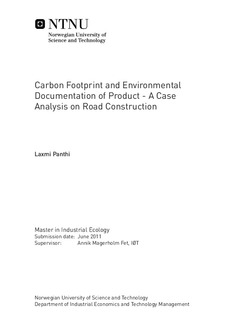| dc.description.abstract | Environmental accounting and documentation of each industry and organization is required for the sustainable development. In addition, environmental awareness is creating pressure to the industry to declare and label environmental features of their product to the consumers. Industrial products interact with environment during entire life cycle of a product and consequences are undesirable environmental impacts. The solution for minimum environmental impacts is the development of methods and tools to measure and compare environmental impacts of products (goods and services are summarized under the term product according the ISO 14040). ISO 14020 series, ISO 14025 - environmental declaration, ISO 14024 - environmental label, and ISO 14021 - self declared environmental claim are facilitating to the industry to communicate environmental impacts of their product. At present, global warming and it’s consequences in climate change are major concerns of environmental impacts for the global society. One specific means to communicate global warming environmental impact is ‘carbon footprint’ of the product, which can be declared to the consumers following the methodology of upcoming ISO 14067- carbon footprint of products. Life cycle assessment is the back bone for industries to quantify environmental impacts, and to document and declare environmental impacts of production activities. This thesis reviews existing environmental documentation system of product, accesses ISO standard for carbon footprint of product and relates it to the environmental product labeling and declaration (EPDs), develops system theory to model a road case system for carbon footprint, calculates carbon footprint of the road construction case and recommends carbon footprint as part of environmental product declaration (EPD). The thesis starts with reviewing existing environmental documentation and carbon footprint accounting systems with a main focus on ISO requirements. The thesis further discusses system theory of industrial ecology to account carbon footprint of the products. System engineering and LCA methodology are taken as tools to account carbon footprint of the products. Road construction case E6 – Kroppen – Tonstad, Trondheim, is taken as case for the carbon footprint account, which is a part of transportation service. Finally, discussions are made on the connection between environmental declaration and carbon footprint, issues of ISO 14067 – carbon footprint of product, system boundary and data aggregations for LCA methodology for road case. | nb_NO |

